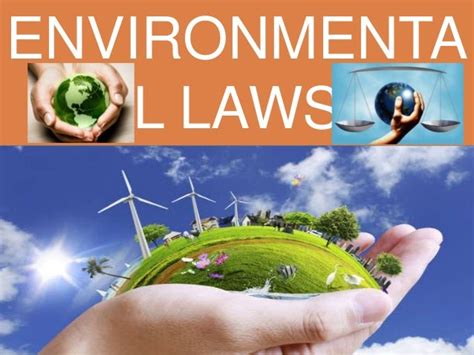As our world grapples with pressing environmental challenges, the field of environmental law serves as a critical framework for addressing and mitigating these issues. In this blog post, we will delve into the complex and evolving landscape of environmental law, examining its history, key concepts, international and national regulations, enforcement mechanisms, and emerging issues. We will also explore the intersection of environmental law and human rights, as well as the challenges and opportunities that lie ahead in this vital field.
From the early beginnings of environmental law to the modern-day complexities of global environmental governance, we will chart the evolution of this area of law and consider how it has adapted to meet the ever-changing demands of environmental protection. By examining the role of courts in shaping environmental law and the enforcement and compliance mechanisms that underpin regulatory frameworks, we will gain a comprehensive understanding of the guardianship of nature and the challenges and opportunities that lie ahead in this crucial field.
Table of Contents
Introduction to Environmental Law
Environmental law is a complex and ever-evolving field that encompasses a wide range of legal, regulatory, and policy issues related to the environment. It is a set of laws and regulations that aim to protect the environment and natural resources, as well as the health and well-being of the human population. Environmental law governs the interactions between humans and the natural world, and it plays a crucial role in shaping how we use and protect our natural resources.
One of the key goals of environmental law is to prevent and mitigate environmental damage, as well as to promote sustainability and conservation efforts. Environmental law also addresses issues such as pollution control, waste management, and land use planning, as well as the protection of endangered species and habitats. The enforcement of environmental law is essential for ensuring compliance with legal requirements and holding individuals and organizations accountable for environmental harm.
As the global population continues to grow and the impacts of human activity on the environment become more evident, the importance of environmental law has become increasingly apparent. It is a dynamic and interdisciplinary field that requires a deep understanding of science, economics, and public policy, as well as a commitment to preserving the natural world for future generations.
Overall, the field of environmental law is essential for promoting sustainable development, protecting natural resources, and ensuring the well-being of both current and future generations. By addressing pressing environmental issues and promoting responsible stewardship of the planet, environmental law plays a pivotal role in shaping the future of our planet.
Evolution of Environmental Law
Environmental law has evolved significantly over the years, reflecting the changing attitudes towards environmental protection and conservation. In the early stages of human civilization, there were no formal laws in place to protect the environment, and resources were often exploited without consideration for the long-term impact. However, as societies began to recognize the importance of preserving natural ecosystems, the concept of environmental law started to take shape.
One of the key milestones in the evolution of environmental law was the emergence of conservation movements in the 19th and 20th centuries. These movements brought attention to the destruction of natural habitats and the depletion of wildlife, leading to the establishment of the first national parks and wildlife reserves. This marked a shift towards recognizing the intrinsic value of the environment and the need for legal protections.
The mid-20th century saw a growing concern for the impact of industrialization and urbanization on the environment, leading to the development of more comprehensive environmental policies and regulations. This period also witnessed the rise of international treaties and conventions aimed at addressing global environmental issues, such as climate change and biodiversity loss.
As we move further into the 21st century, the evolution of environmental law continues to be shaped by emerging challenges, such as technological advancements, population growth, and the increasing interconnectedness of global ecosystems. There is a growing recognition of the need for innovative approaches to environmental governance, and the role of environmental law in addressing these complex issues remains crucial.
Key Concepts in Environmental Law
Environmental law encompasses a diverse range of legal principles, regulations, and statutes aimed at protecting the environment and conserving natural resources. One of the key concepts in environmental law is the principle of sustainable development, which emphasizes the need to balance economic, social, and environmental considerations in decision-making to ensure the well-being of present and future generations.
Another important concept is polluter pays principle, which holds that those who pollute should bear the costs of managing and mitigating the pollution they create. This principle serves as a powerful economic incentive for industries to adopt cleaner and more sustainable practices, ultimately reducing the environmental impact of their operations.
Precautionary principle is also a vital concept in environmental law, requiring decision-makers to take preventive action in the face of scientific uncertainty to prevent potential harm to the environment. This principle is often invoked in cases where the potential risks of an activity or project are not fully understood, prompting regulators to err on the side of caution.
Lastly, the concept of public participation is crucial in environmental law, as it ensures that stakeholders, including communities, NGOs, and indigenous groups, have the opportunity to engage in decision-making processes that affect the environment. Public participation fosters transparency, accountability, and legitimacy in environmental governance, ultimately leading to more well-informed and sustainable outcomes.
International Treaties and Conventions
International treaties and conventions play a crucial role in shaping environmental law on a global scale. These agreements are essential for addressing environmental issues that transcend national boundaries and require collective action from nations around the world. The Paris Agreement, for example, is a landmark international treaty that aims to limit global temperature rise and mitigate the impacts of climate change. By committing countries to specific targets and actions, these treaties and conventions provide a framework for cooperation and coordination on environmental issues.
Furthermore, international treaties and conventions serve as a platform for countries to exchange best practices, share knowledge, and build capacity to address environmental challenges. The Convention on Biological Diversity, for instance, seeks to protect biodiversity and promote sustainable development through the sharing of expertise and technologies. These agreements also facilitate collaboration on research and development of innovative solutions to environmental problems.
In addition to their role in fostering cooperation, international treaties and conventions establish mechanisms for accountability and monitoring of environmental commitments. The Montreal Protocol, which aims to phase out ozone-depleting substances, demonstrates how these agreements can set up systems for reporting, verification, and compliance to ensure that countries uphold their obligations. By creating transparency and oversight, these mechanisms help to uphold the integrity of the environmental law framework.
Overall, international treaties and conventions are instrumental in addressing global environmental challenges and promoting sustainable development. Through their provisions for cooperation, knowledge-sharing, and accountability, these agreements form the foundation for a unified and coordinated approach to environmental protection on a global scale.
National Environmental Legislation
National Environmental Legislation refers to the laws and regulations set by a country to protect its environment and natural resources. These laws are crucial for maintaining the ecological balance and ensuring sustainable development. Each country has its own set of environmental legislation tailored to its specific needs and challenges.
These regulations cover a wide range of issues including air and water quality, waste management, wildlife protection, and land use. They outline the standards and guidelines that individuals, businesses, and industries must follow to minimize their impact on the environment.
Some countries also have specific legislation to address climate change, biodiversity conservation, and the protection of endangered species. National environmental legislation plays a key role in shaping a country’s environmental policies and ensuring compliance with international environmental agreements.
Enforcement of these laws is essential to hold violators accountable and to create a culture of environmental responsibility. National environmental agencies and regulatory bodies are responsible for monitoring and enforcing these regulations to ensure the protection of the environment for future generations.
Enforcement and Compliance Mechanisms
Enforcement and compliance mechanisms are crucial in ensuring that environmental laws are being followed and that the necessary steps are being taken to protect the environment. Regulatory agencies play a key role in monitoring and enforcing environmental regulations. They are responsible for investigating violations, issuing fines, and ensuring that companies are taking the necessary steps to comply with environmental laws.
One important compliance mechanism is the requirement for companies to obtain permits for activities that may have an impact on the environment. These permits outline the specific requirements that the company must follow in order to minimize their environmental impact. Regulatory agencies are responsible for reviewing and approving these permits, as well as ensuring that companies are abiding by the conditions outlined in their permits.
Inspections are another important enforcement mechanism. Regulatory agencies conduct regular inspections of facilities to ensure that they are in compliance with environmental regulations. These inspections can also help to identify any potential issues or violations that need to be addressed.
Enforcement actions such as fines, penalties, and even criminal charges may be taken against companies or individuals who violate environmental laws. These actions help to deter future violations and send a strong message that environmental regulations must be taken seriously.
Role of Courts in Environmental Law
The role of courts in environmental law is crucial in ensuring that environmental regulations and standards are upheld and enforced. Courts play a vital role in interpreting and applying environmental laws, resolving disputes, and holding responsible parties accountable for environmental harm.
One of the key functions of courts in environmental law is to adjudicate cases involving environmental issues. This includes hearing cases related to pollution, land use, protection of endangered species, and other matters that impact the environment. Courts have the authority to review and interpret environmental laws, ensuring that they are correctly applied in individual cases.
In addition to adjudication, courts also have the power to issue injunctions and other orders to halt activities that may cause harm to the environment. Through their decisions, courts can compel individuals, companies, and government agencies to comply with environmental regulations and take steps to mitigate environmental damage.
Furthermore, courts can also play a role in shaping environmental law through their decisions and precedents. Landmark cases and legal interpretations by courts can influence the development of environmental regulations and standards, setting important precedents for future cases and regulatory actions.
Emerging Issues in Environmental Law
Climate Change: One of the most pressing emerging issues in environmental law is the impact of climate change. With rising global temperatures and extreme weather events becoming more frequent, governments and international organizations are grappling with how to regulate and mitigate the effects of climate change on the environment.
Technological Advancements: The rapid advancement of technology presents new challenges for environmental law. Issues such as the regulation of genetically modified organisms, the use of artificial intelligence in resource management, and the impact of blockchain on environmental monitoring are just a few examples of the complex legal issues that arise from technological developments.
Environmental Justice: As environmental degradation continues to disproportionately affect marginalized communities, the concept of environmental justice has become an increasingly important consideration in environmental law. Ensuring that all individuals and communities have equal access to environmental resources and protection is a key emerging issue in the field.
Transboundary Pollution: With the increasing globalization of industry and trade, transboundary pollution has become a major concern for environmental law. The legal frameworks for addressing pollution that crosses international borders are still evolving, and there is a growing need for international cooperation and coordination in this area.
Intersection of Environmental Law and Human Rights
The intersection of environmental law and human rights is an important and complex area of study. It involves the examination of how environmental degradation affects human rights, as well as the ways in which human rights principles can be used to protect the environment. This intersection has become increasingly relevant as the global community faces the challenges of climate change, pollution, and the depletion of natural resources.
One of the key issues at the intersection of environmental law and human rights is the right to a healthy environment. This right is not explicitly recognized in international human rights law, but there is a growing recognition that a healthy environment is essential for the enjoyment of other human rights, such as the right to life, the right to health, and the right to an adequate standard of living.
Another aspect of this intersection is the recognition of the rights of indigenous peoples and local communities. These groups often have a close connection to the land and natural resources, and their rights are frequently violated by environmental degradation and resource extraction. Environmental law can be used to protect the rights of these marginalized groups, ensuring that their traditional knowledge and livelihoods are respected and preserved.
In recent years, there has been a growing emphasis on the need to integrate human rights principles into environmental law and policy. This includes the recognition of the rights of future generations, as well as the rights of vulnerable populations who are disproportionately affected by environmental harm. By addressing these issues at the intersection of environmental law and human rights, we can work towards a more just and sustainable world for all.
Challenges and Opportunities in Environmental Law
Environmental law faces numerous challenges in the modern world, as the increasing human impact on the environment creates new legal dilemmas. One of the main challenges is the balancing act between conservation efforts and economic development. Many industries are hesitant to comply with environmental regulations due to potential financial setbacks, and this creates a significant obstacle for lawmakers and enforcers.
Another challenge is the global nature of environmental issues. Pollution and climate change are not limited by national borders, creating difficulties in international cooperation and enforcement. This requires complex negotiations and agreements between countries to effectively address environmental problems on a large scale.
Despite these challenges, there are also numerous opportunities in environmental law. As public awareness of environmental issues grows, there is a greater demand for strong and effective environmental regulations. This presents an opportunity for lawmakers to enact legislation that truly protects the environment and encourages sustainable practices.
Additionally, advancements in technology offer opportunities to improve environmental law enforcement. The development of new monitoring and data collection tools can provide valuable evidence in environmental legal cases and facilitate more effective enforcement of regulations.






